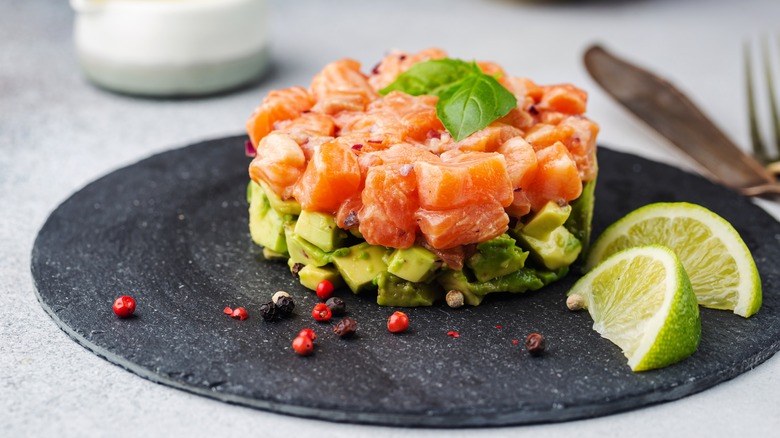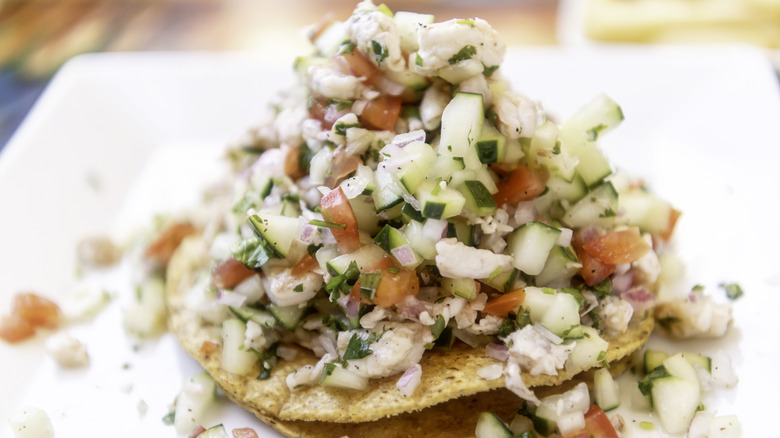Ceviche Vs Fish Tartare: What's The Difference?
The world of fresh and raw fish isn't one a lot of people want to jump into lightly, especially when they don't know the difference between all the particular preparations like ceviche and tartare. Raw preparations of fish have become a lot more common in recent decades, with sushi leading the way, but there can still be apprehension around food that is not at its best unless it's properly prepared and very fresh. And while people may have learned the difference between sushi and sashimi, more fish preparations are showing up on restaurant menus all the time to keep people guessing. Add to this that tartare is something most people in the U.S. associate with steak, and you might really be thrown for a loop. It's understandable, too, because despite superficial similarities, ceviche and fish tartare are very different experiences. That comes down to one big factor, ceviche isn't technically raw.
Ceviche is a popular dish that is made with all kinds of flavors and recipes, but the key thing that unites them all is that they are marinated in citrus juice or other acidic ingredients. This acidic marinade can include other flavors, but the acid is important because it "cooks" the raw fish as it sits in the juices. So despite using raw fish and no heat, ceviche ends up with a texture similar to cooked fish. Fish tartare stays raw, being cubed, dressed, and served immediately or quickly without curing, much like the steak version.
Ceviche is marinated in acidic ingredients while fish tartare is truly raw
Ceviche is actually a bit of a magic trick, as it combines the color and texture of cooked fish with raw flavors. This happens because the acid in the ceviche marinade denatures proteins, which is the same thing that happens when fish is exposed to heat. The marinades break down proteins in the fish flesh, which then reform in new arrangements. This produces the tight, snappy texture and color of cooked fish, but because no heat is involved the fish doesn't undergo the Maillard reaction, which changes the flavor through browning. This happens not just because ceviche uses acid, fish tartare can too, but ceviche uses up to eight times as much acid compared to other raw fish preparations, and it's left to sit for longer, so the acid can fully cure the mixture.
Fish tartare on the other hand is usually made with a sauce mixture to bind the cubed or chopped fish together, as well as flavor it. This can be mayo-based, or oil-based, and there may be additions like lemon juice as well, but the fish should retain its rich, tender raw texture, which is complimented by the fatty sauce. Both ceviche and tartare can cover a wide range of recipes, but this textural difference is the biggest thing the marinading of ceviche accomplishes. With its firm bite versus fish tartare's creaminess, you might not even realize the ceviche was mixed raw too.

